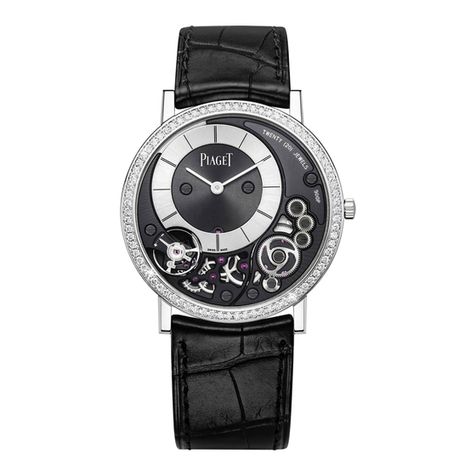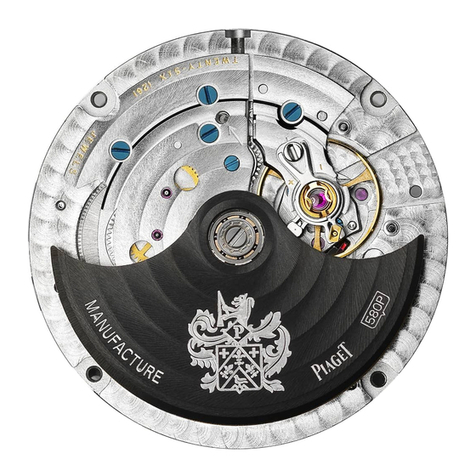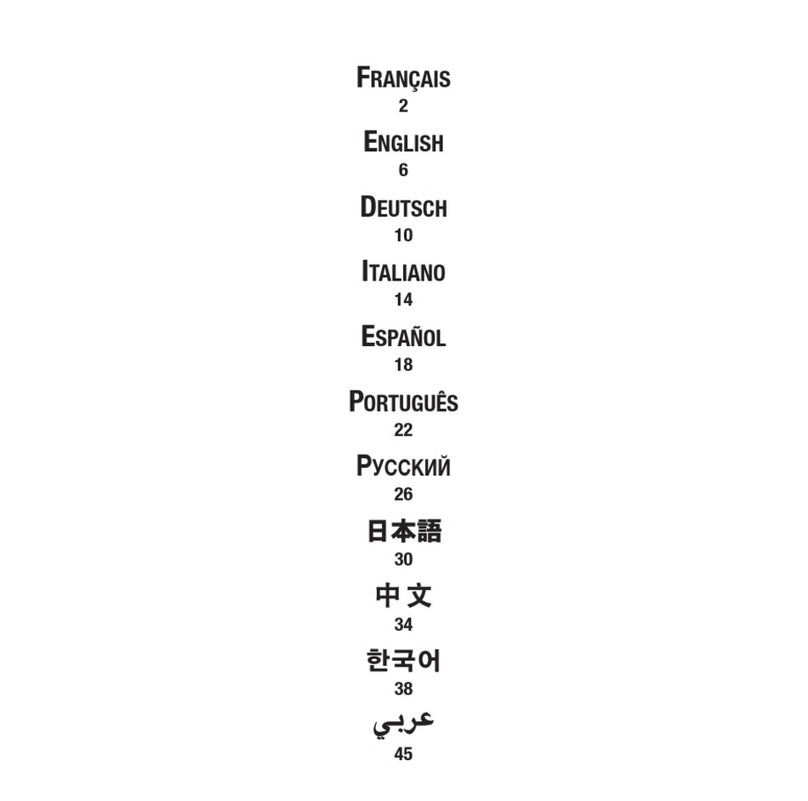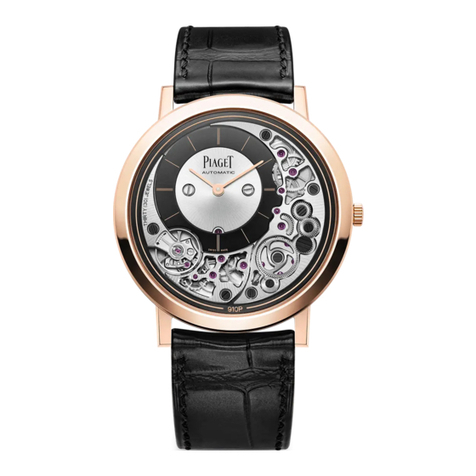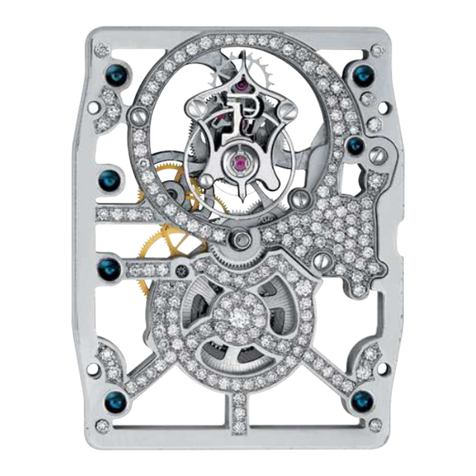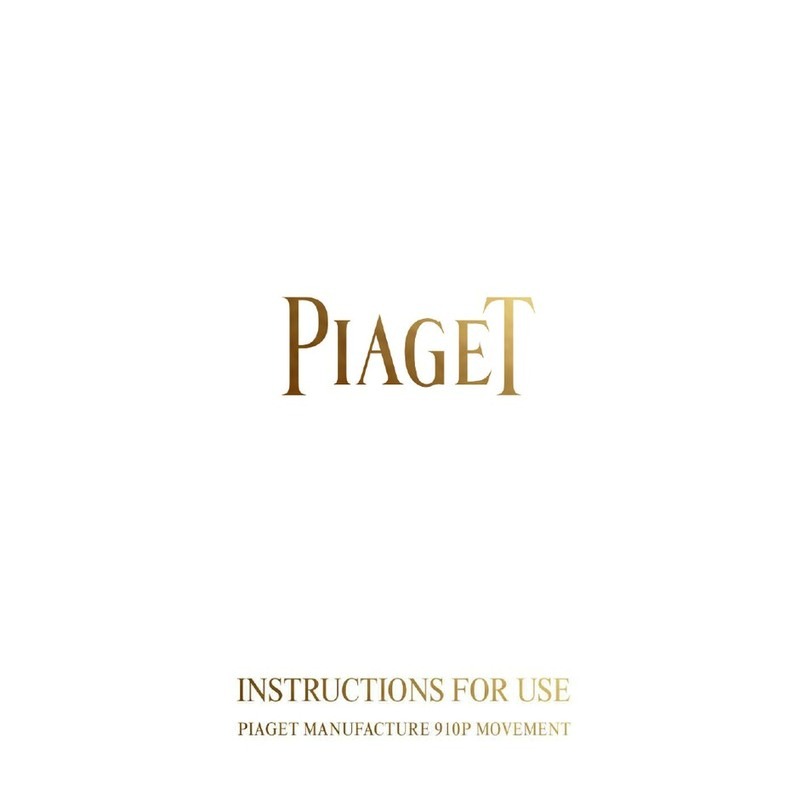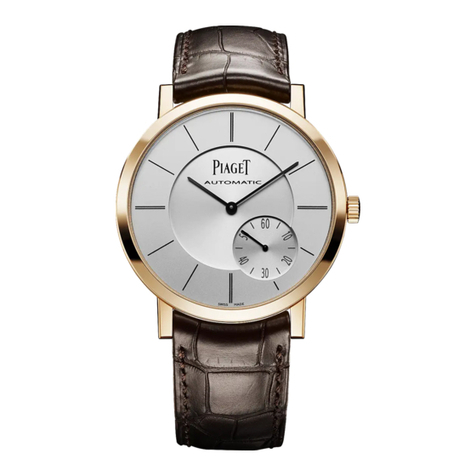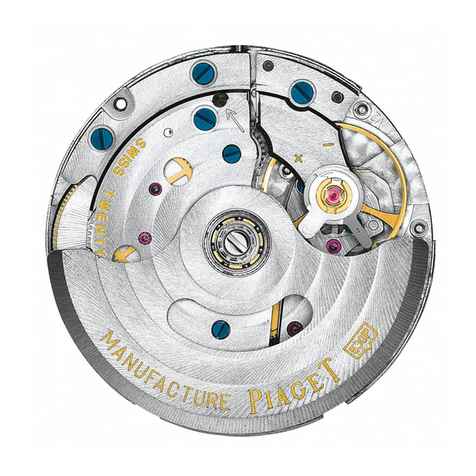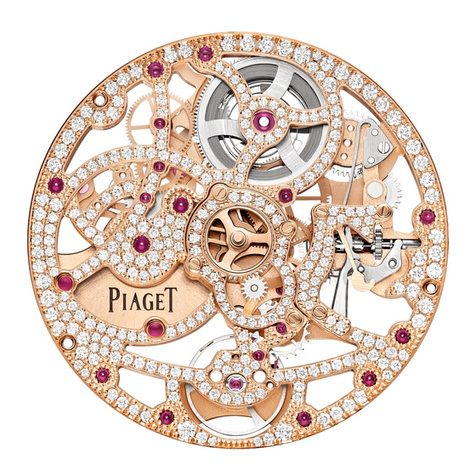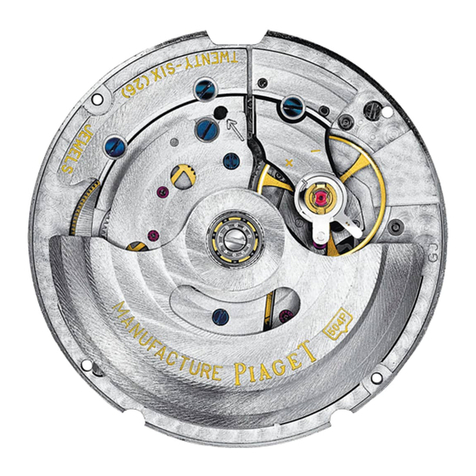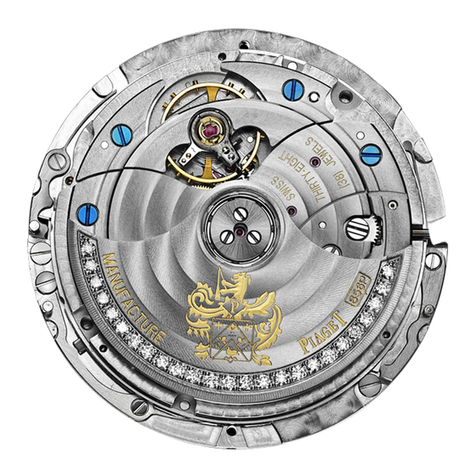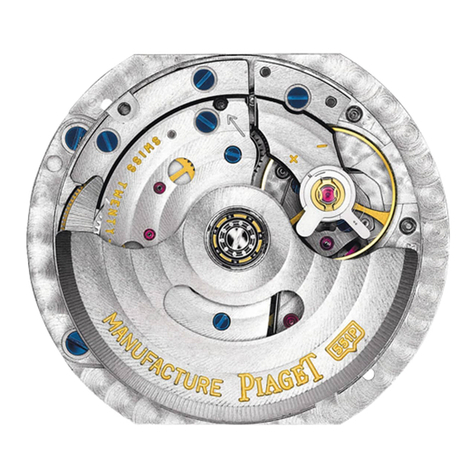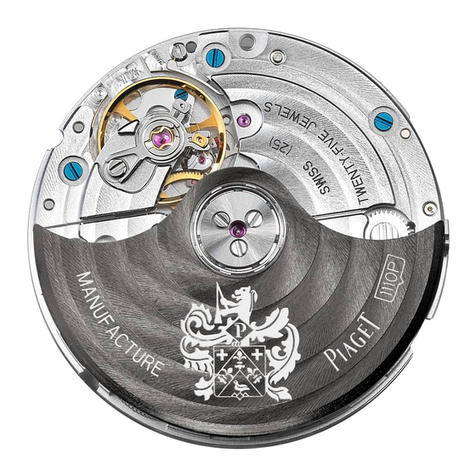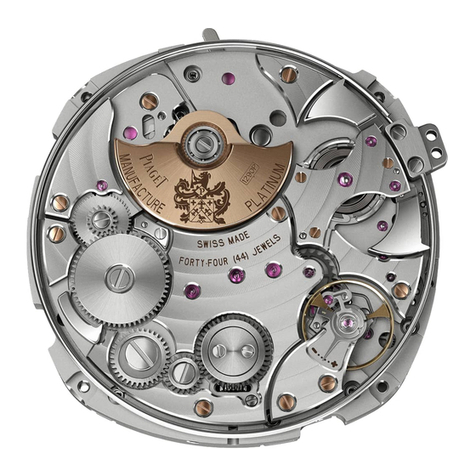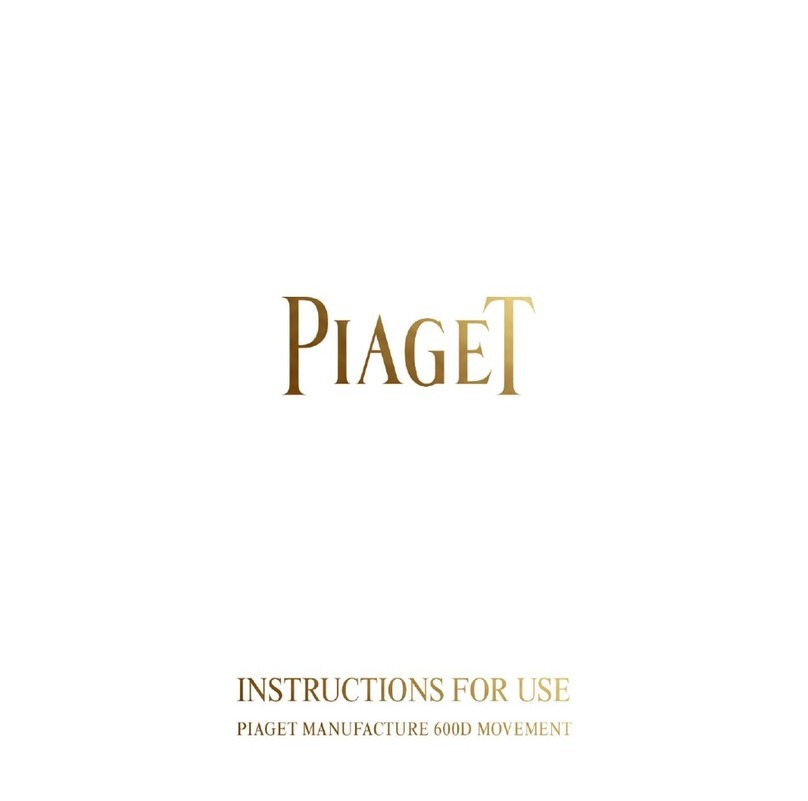
98
MOUVEMENTQUANTIÈMEPERPÉTUELMÉCANIQUE
EXTRAPLATÀREMONTAGEAUTOMATIQUE
PHASESDELUNE
RÉGLAGEDESFONCTIONS
1255P
MISEÀL’HEUREDUQUANTIÈMEPERPÉTUEL
Les correcteurs situés sur les côtés sont destinés à régler votre quantième perpétuel. Vous
devez toujours garder en tête que toutes les indications temporelles sont liées. Lorsque
vous changez la date, l’ensemble du calendrier s’en trouve modifié.
1. Amener le mécanisme aux environs de 6h30/18h30. Pour cela, faites tourner les
aiguilles à l’aide de la couronne (placé en position 1) dans le sens horaire. Une fois le
réglage effectué, placez la couronne en position 0. Cette première étape permet de ne
pas endommager le mouvement lors du réglage.
2.
A l’aide du correcteur de date à 10h, corrigez la date à celle du jour précédent. A chaque
pression du correcteur, vous vous déplacez d’un jour. Ici le correcteur modifie la date et le
jour de la semaine, mais il ne faut pas prendre en compte la correction du jour de la semaine.
3. A l’aide du correcteur du jour de la semaine à 8h, corrigez le jour de la semaine à celle du
jour précédent
. A chaque pression du correcteur, vous vous déplacez d’un jour.
4. A l’aide du dernier correcteur de gauche tout en haut, corrigez le mois et l’affichage de
l’année bissextile. Ici, il est nécessaire de connaitre l’année bissextile à venir. A chaque
pression du correcteur, vous vous déplacez d’un mois.
5. A l’aide du correcteur à 4h, corrigez la phase de lune à celle du
jour précédent
. Ici, il est
nécessaire de connaitre la date de la dernière phase de lune.
Positionnez-vous donc dans un premier temps en pleine lune, puis cliquer le nombre
de fois correspondant au nombre de jours passés après celle-ci (
au jour précédent
).
A chaque pression du correcteur, vous vous déplacez d’un jour.
6. Le calendrier est maintenant corrigez à la
date d’hier
. Vous pouvez désormais tirer la
couronne en position 1 et déplacez les aiguilles dans le sens horaire jusqu’a ce que la date
saute à la date du jour. Vous pouvez désormais regler l’heure en sachant que minuit vient
de passer.
FRANÇAIS
SENSANTIHORAIRE
SENSHORAIRE
CORRECTION
DUMOISETDEL’ANNÉE
CORRECTION
DELAPHASEDELUNE
CORRECTION
DUJOURDELASEMAINE
CORRECTION
DELADATE






